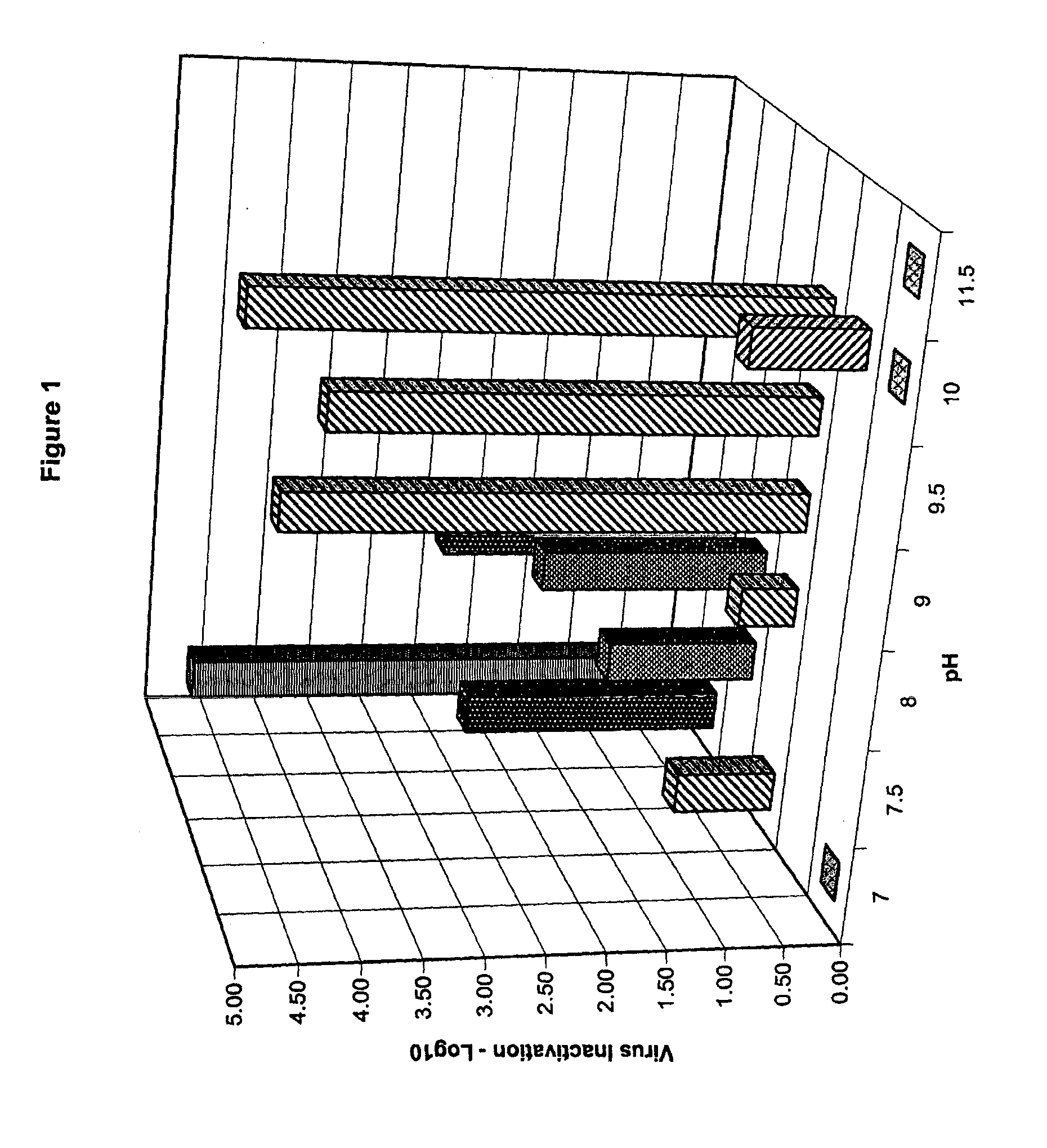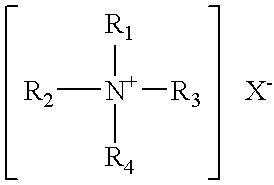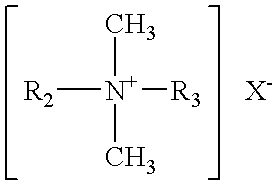Method and Composition for Disinfecting Hard Surfaces
- Summary
- Abstract
- Description
- Claims
- Application Information
AI Technical Summary
Benefits of technology
Problems solved by technology
Method used
Image
Examples
examples
[0062]The following examples are presented for a further understanding of the invention. The data shown in Tables 1 through 5 show various embodiments of the present invention. Table 1 shows poliovirus inactivation at various levels of alcohol and pH; Table 2 demonstrates various comparative examples poliovirus inactivation at zero level alcohol at various pH; Tables 3A, 3B, and 3C show poliovirus inactivation at various alcohol levels at pH 7.0, 8.0, and 10.0, respectively; and Table 4 shows disinfection activity at various alcohol levels and pH.
TABLE 1Ex. 1Ex. 2Ex. 3Ex. 4Ex. 5Ex. 6Ex. 7Ex. 8Ethyl alcohol45.0045.0045.0045.0045.0055.0055.0055.00Na4EDTA (38%)1.501.501.501.501.501.501.501.50Citric acid (50%)0.110.080.060.040.030.350.240.20Deionized waterq.s.q.s.q.s.q.s.q.s.q.s.q.s.q.s.pH9.510.010.511.011.57.08.08.5Poliovirus- log reduction0.001.001.001.003.000.880.502.88Ex. 9Ex. 10Ex. 11Ex. 12Ex. 13Ex. 14Ex. 15Ex. 16Ethyl alcohol55.0055.0055.0060.0060.0065.0065.0070.00Na4EDTA (38%)1.5...
PUM
| Property | Measurement | Unit |
|---|---|---|
| Percent by mass | aaaaa | aaaaa |
| Percent by mass | aaaaa | aaaaa |
| Fraction | aaaaa | aaaaa |
Abstract
Description
Claims
Application Information
 Login to View More
Login to View More - R&D
- Intellectual Property
- Life Sciences
- Materials
- Tech Scout
- Unparalleled Data Quality
- Higher Quality Content
- 60% Fewer Hallucinations
Browse by: Latest US Patents, China's latest patents, Technical Efficacy Thesaurus, Application Domain, Technology Topic, Popular Technical Reports.
© 2025 PatSnap. All rights reserved.Legal|Privacy policy|Modern Slavery Act Transparency Statement|Sitemap|About US| Contact US: help@patsnap.com



